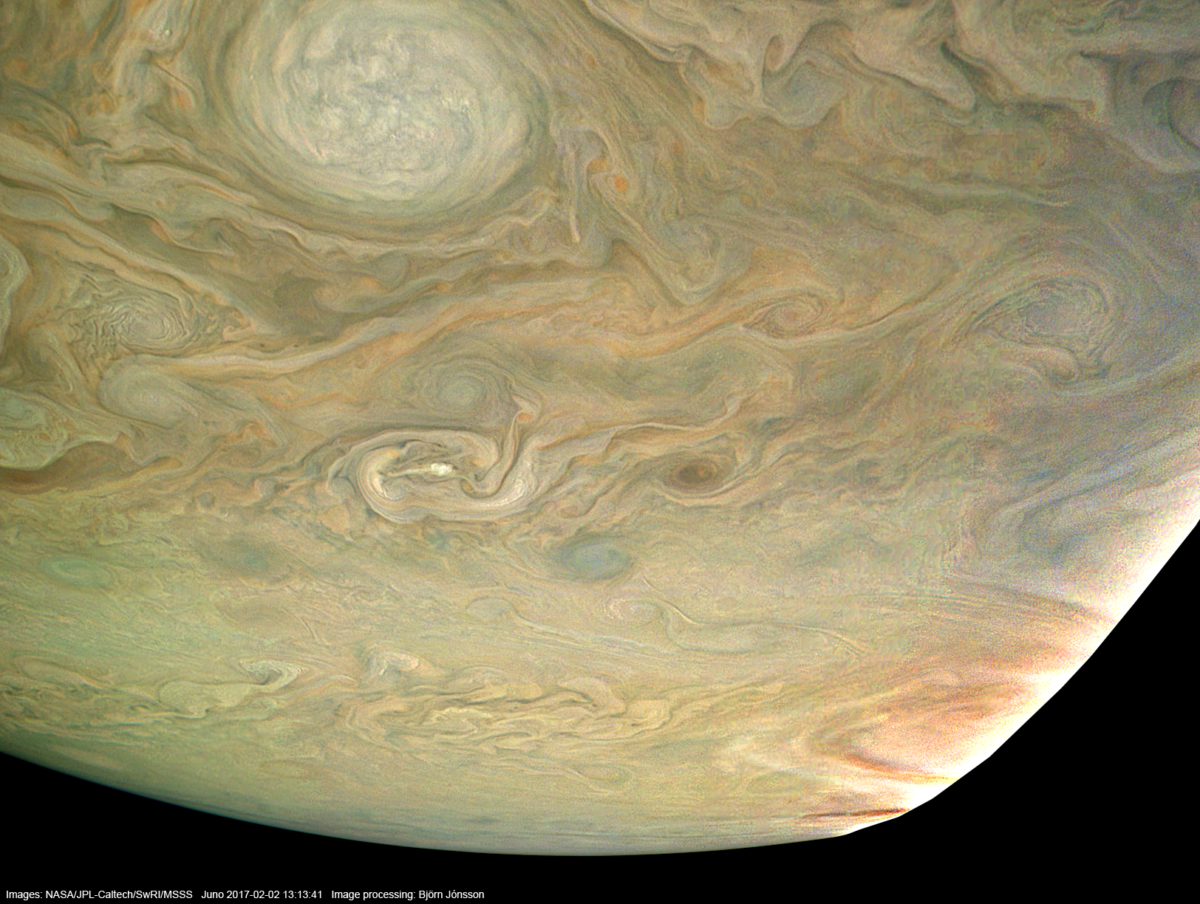Björn Jónsson • Mar 27, 2017
New treasures from Juno: Jupiter dazzles during fourth close approach
JunoCam images can be described in one word: awesome. They are a lot more challenging to process properly than Voyager, Galileo and Cassini images, but the resulting images are every bit as spectacular as the ones from earlier spacecraft. The color, in particular, is much improved since the days of Voyager.
Here are a few images processed from the image 106 raw framelets acquired during Juno's fourth perijove orbit (third science orbit). This is the "POI: Oval BA" observation. In the three images below, the effects of global illumination have been removed. The contrast and color has been exaggerated, and small scale features sharpened, to better reveal various features and color variations.



These images show an enormous amount of small scale detail. Cloud shadows and vertical relief are clearly visible at many locations. The fairly big oval visible in these images is one of the "string of pearls" ovals near latitude 40°S latitude; this is oval A1.
Here is a different version of these images with approximately true color and contrast. Small scale features have been sharpened slightly:



All of these images were produced by using viewing geometry information from SPICE kernels to reproject the raw framelets to a simple cylindrical map. SPICE is an acronym that refers to files/kernels containing various information associated with spacecraft observations:
S = Spacecraft ephemeris, P = planet ephemeris, I = instrument description including FOVs, position and orientation on the spacecraft, C = spacecraft and/or instrument dynamic orientation, and E = Event or Experimenter's description of the observation effort.
For the best results, I had to make corrections to the camera pointing. I then used a 3D renderer to create perspective views of an oblate spheroid, using the spacecraft's location and the camera pointing at three different points in time when JunoCam was acquiring the original framelets.
Since JunoCam has a very wide field of view (58°), these images should give a fairly good idea of what a naked eye view from Juno's location would look like. This is different from Voyager, Galileo and Cassini images, where the field of view is less than 0.5°. The images from these spacecraft are therefore more similar to what one would see through a small astronomical telescope from a distance of a few million kilometers from Jupiter.
Juno's altitude above Jupiter was only about 14,500 km when the original images were obtained. Therefore, the area covered by the images isn't particularly big. Below is a quick and dirty context view. It is based on John Rogers' Perijove 4 (PJ4) predictive map that can be seen here.
Finally, here's an animation showing all of image 106 JunoCam images acquired during Juno's 4th perijove. It was created using Juno's location and JunoCams' pointing when it was imaging Jupiter:
Let’s Go Beyond The Horizon
Every success in space exploration is the result of the community of space enthusiasts, like you, who believe it is important. You can help usher in the next great era of space exploration with your gift today.
Donate Today

 Explore Worlds
Explore Worlds Find Life
Find Life Defend Earth
Defend Earth


